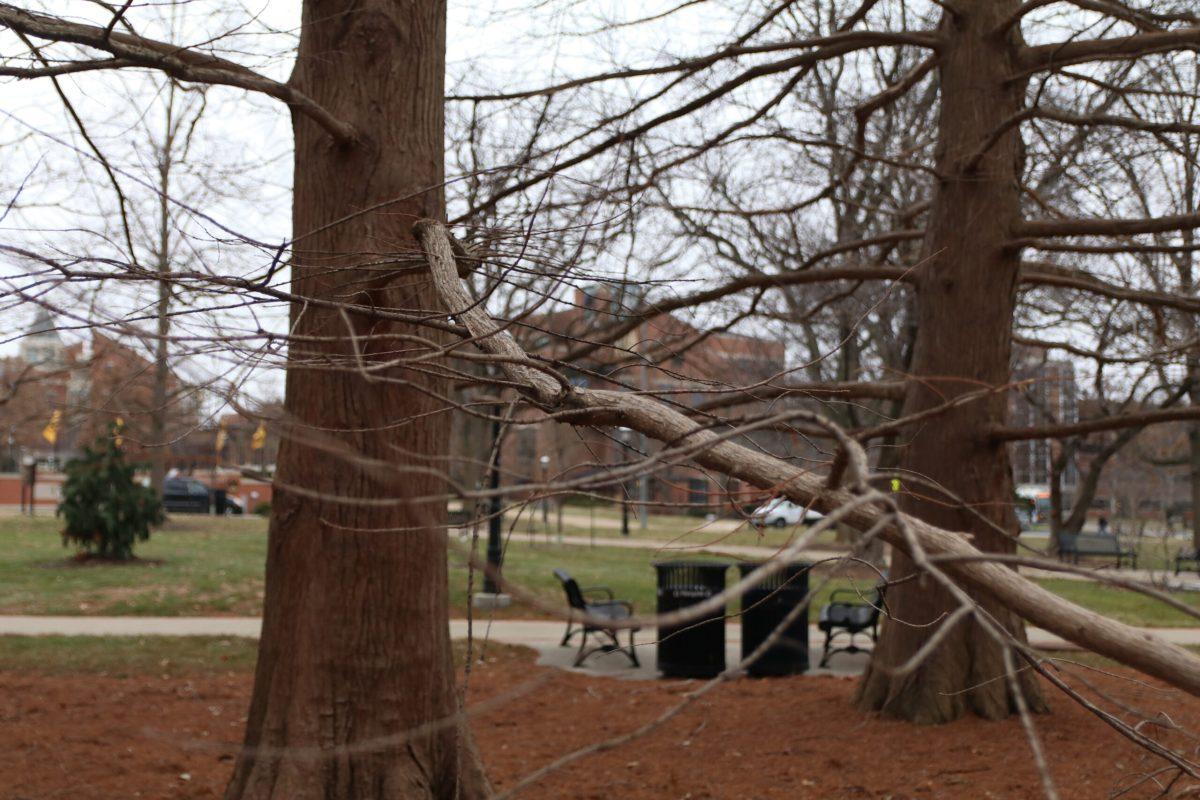
When members of the MU community think of the Mizzou Botanic Garden, they may picture lush trees and blooming flowers. The Mizzou Botanic Garden website describes the garden as “an exceptional and beautiful learning opportunity for our students, faculty, staff and visitors.”
However, with the recent winter storms weighing down and damaging many trees, the botanic garden has been greatly affected, with damages to a little less than one-third of trees.
The storm on Jan. 12 and 13 caused the most damage to the botanic garden, primarily to the trees, Pete Millier, director of landscape service and the Mizzou Botanic Garden, said.
“It was very wet, heavy snow, and it came down fairly fast, and it just created a lot of weight on a lot of tree branches and unfortunately broke a few,” Millier said. “Some trees have a little bit of damage, but there are a number of them that have a lot more damage to the point that the tree is beyond being able to salvage.”
This year’s winter storms have caused a unique amount of damage to the garden, Millier said.
“In past years when we’ve had a big snow, we haven’t had nearly the damage as this because the snows were lighter in nature and they tended to drift,” Millier said. “Really, this snow just came straight down. It was wet, and it was soggy, and it just collected really fast on branches. So, we’ve not had anything quite like this.”
Since snow removal falls under the responsibilities of the landscape service department, the winter weather brings multiple levels of work for Millier and the landscape service staff.
Campus Facilities does snow removal on around 30 miles of sidewalk, nearly 15 streets and upwards of 75 parking lots, Karlan Seville, communications manager of MU Operations, said in an email.
“Our primary focus was the snow, dealing with that and getting it out of the way so people could get around the campus,” Millier said. “If we don’t do our job right, people get hurt, and I don’t want anybody to get hurt.”
Once the snow removal process was completed, Campus Facilities moved on to assessing the botanic garden.
“You set up kind of a triage of what are the worst trees, ones that may pose an immediate hazard to people or property,” Millier said. “You take care of those, and then you take care of the ones that may just be blocking part of the sidewalk or doing something like that. Then you work your way down from the most hazardous to the least hazardous.”
The botanic garden is currently in the lower-hazard range, Millier said. With the help of two tree contractors that will begin working this week, Arthur Ratliff Tree & Stump Removal and Braik’s Tree Care, the clean-up process will proceed.
While it was originally reported that roughly a third of the 6,000 trees on campus were damaged in the storm, it looks as though fewer trees were damaged than originally anticipated.
“Our original estimate of about a third of the trees on campus having some level of damage is probably just a touch high,” Millier said. “We’re right at about 1,100 trees that we’ve documented damage on. There’s more that we’re going to see over the next six months that you can’t see now. We’re probably going to wind up with 1,400 or 1,500 trees with damages, which is good news.”
However, more trees look to need complete removal than was first thought. Originally, the estimate was that around 40 to 60 trees would have to be removed, Millier said.
“We have a group of about 50 or so [trees] that even a layman would know are goners,” Millier said. “When we get rolling with pruning and removing wood out of them, we’re probably going to realize that there’s another 50 or so that you can only prune so much, and then you have nothing left or very little left to that tree. It’s that group that I think is going to be problematic for us. It probably about doubles what we expected to have as far as trees being totally lost.”
However, the botanic garden and landscape service staff will be replanting the lost trees. About 150 to 200 trees get planted each year, Millier said.
In continuing to detect which trees will need removal or rehabilitation, Millier asked that students report trees that look damaged. According to the Campus Facilities website, their customer service number is 573-882-8211.
“If you see something, please report it,” Millier said. “I can go out on campus, but I’ve only got two eyes. The more eyes that we have out there, the better.”
_Edited by Emily Wolf | [email protected]_